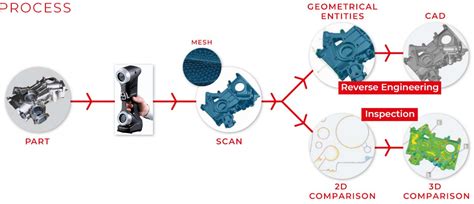What is Reverse Engineering?
Reverse engineering is a broad term that encompasses various techniques and methods used to deduce the design decisions and implementation details of a product or system. The goal is to gain a deeper understanding of how something works, often to recreate it, improve upon it, or find vulnerabilities.
In software development, reverse engineering typically involves:
- Disassembling the compiled code
- Analyzing the assembly code to understand the program’s logic
- Reconstructing the original source code or creating a higher-level representation of the program
Types of Reverse Engineering
There are several types of reverse engineering, each with its own objectives and techniques:
| Type | Description |
|---|---|
| Software Reverse Engineering | Analyzing compiled code to understand a program’s functionality and structure |
| Hardware Reverse Engineering | Examining physical devices to understand their design and components |
| Network Reverse Engineering | Analyzing network protocols and communication patterns to understand how systems interact |
| Malware Reverse Engineering | Studying malicious software to understand its behavior and develop countermeasures |
The Legality of Reverse Engineering
The legality of reverse engineering varies depending on the jurisdiction and the specific context in which it is performed. In some cases, reverse engineering may be protected under fair use or other legal doctrines. However, it is essential to consider the following factors:
- Copyright laws
- Patent laws
- License agreements
- Trade secrets
In the United States, the Digital Millennium Copyright Act (DMCA) provides some exceptions for reverse engineering, particularly for interoperability and security testing purposes. However, it is always advisable to consult with legal experts before engaging in reverse engineering activities.

Techniques Used in Software Reverse Engineering
Disassembly
Disassembly is the process of converting compiled machine code into human-readable assembly code. This is typically done using a disassembler, which takes the binary executable as input and generates the corresponding assembly code.
Popular disassemblers include:
- IDA Pro
- Ghidra
- Hopper
- radare2
Decompilation
Decompilation takes the process a step further by attempting to reconstruct the original high-level source code from the assembly code. Decompilers analyze the assembly code and generate a higher-level representation, such as C or C++ code.
However, decompilation is not always perfect, and the generated code may not be identical to the original source code. Additionally, some obfuscation techniques can make decompilation more challenging or even impossible.
Debugging
Debugging is the process of examining a program’s behavior during runtime. By using a debugger, reverse engineers can step through the code, set breakpoints, inspect memory, and analyze the program’s state at various points of execution.
Popular debuggers include:
- GDB (GNU Debugger)
- WinDbg
- OllyDbg
- x64dbg
Code Analysis
Code analysis involves studying the disassembled or decompiled code to understand its structure, flow, and functionality. This may include:
- Identifying functions and their parameters
- Analyzing control flow and data flow
- Recognizing common patterns and idioms
- Examining data structures and algorithms
Code analysis can be performed manually or with the help of automated tools that can detect certain patterns or vulnerabilities.

Challenges in Reverse Engineering
Reverse engineering can be a complex and time-consuming process, especially when dealing with large or obfuscated programs. Some common challenges include:
Code Obfuscation
Code obfuscation techniques are often employed to make reverse engineering more difficult. These techniques can include:
- Renaming identifiers to meaningless names
- Inserting dead or irrelevant code
- Encrypting or packing the executable
- Using anti-debugging tricks
Obfuscation can significantly increase the effort required to reverse engineer a program and may require specialized tools and techniques to overcome.
Lack of Documentation
When reverse engineering a program, the original documentation, comments, and variable names are usually not available. This lack of context can make it harder to understand the program’s purpose and functionality, requiring the reverse engineer to rely on their own analysis and intuition.
Complexity and Size
As programs become larger and more complex, the process of reverse engineering becomes more challenging. Understanding the interactions between different components, libraries, and systems can be a daunting task, requiring significant time and effort.

Applications of Reverse Engineering
Reverse engineering has various applications across different domains, including:
Security Research
Reverse engineering is often used in security research to identify vulnerabilities, analyze malware, and develop exploits. By understanding how a system works, security researchers can find and fix weaknesses, as well as develop countermeasures against malicious actors.
Interoperability
Reverse engineering can be used to develop interoperable systems or to create alternative implementations of proprietary software. By understanding the communication protocols and data formats used by a system, developers can create compatible software that can interact with it.
Legacy System Maintenance
When the original source code or documentation for a legacy system is lost or unavailable, reverse engineering can be used to understand and maintain the system. By analyzing the compiled code, developers can identify the system’s functionality and make necessary updates or modifications.
Competitive Analysis
In some cases, companies may use reverse engineering to analyze their competitors’ products and gain insights into their design and functionality. While this practice is controversial and may have legal implications, it can provide valuable information for businesses looking to improve their own products or services.
Limitations of Reverse Engineering
While reverse engineering is a powerful technique, it has its limitations:
- Reverse engineering can be time-consuming and resource-intensive, especially for large or complex programs.
- The results of reverse engineering may not always be complete or accurate, particularly when dealing with obfuscated or heavily optimized code.
- Reverse engineering may not be able to recover certain aspects of the original program, such as comments, variable names, or high-level design decisions.
- Legal and ethical considerations may restrict the use of reverse engineering in certain contexts.
Conclusion
Reverse engineering is a valuable tool for understanding and analyzing software systems, even without access to the original source code. By using techniques such as disassembly, decompilation, debugging, and code analysis, reverse engineers can gain insights into a program’s functionality, structure, and potential vulnerabilities.
However, reverse engineering is not a silver bullet and comes with its own set of challenges and limitations. It requires significant expertise, time, and effort to be successful and may not always yield complete or accurate results.
When considering reverse engineering, it is crucial to be aware of the legal and ethical implications and to ensure that it is performed in compliance with applicable laws and regulations.
Frequently Asked Questions (FAQ)
-
Is reverse engineering legal?
The legality of reverse engineering depends on the jurisdiction and the specific context in which it is performed. In some cases, reverse engineering may be protected under fair use or other legal doctrines, but it is essential to consult with legal experts to ensure compliance with applicable laws and regulations. -
What tools are used for reverse engineering?
There are various tools used in reverse engineering, depending on the specific task and target system. Some common tools include disassemblers (e.g., IDA Pro, Ghidra), decompilers (e.g., Hex-Rays, RetDec), debuggers (e.g., GDB, WinDbg), and binary analysis frameworks (e.g., Radare2, Binary Ninja). -
Can any program be reverse engineered?
In theory, any program can be reverse engineered, but the practicality and feasibility of doing so may vary. Factors such as code obfuscation, complexity, size, and the availability of tools and expertise can make reverse engineering more challenging or even infeasible in some cases. -
How long does it take to reverse engineer a program?
The time required to reverse engineer a program depends on various factors, such as the program’s size, complexity, and the reverse engineer’s expertise. It can range from a few hours for simple programs to several months or even years for large and complex systems. -
What skills are required for reverse engineering?
Reverse engineering requires a combination of technical skills and problem-solving abilities. Some essential skills include: - Knowledge of assembly language and computer architecture
- Familiarity with programming concepts and algorithms
- Experience with debugging and binary analysis tools
- Understanding of operating systems and system internals
- Patience, persistence, and attention to detail
By understanding the techniques, challenges, and applications of reverse engineering, software developers and security professionals can leverage this powerful tool to analyze, understand, and improve software systems, while being mindful of the legal and ethical considerations involved.
